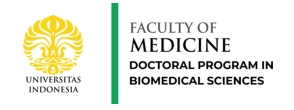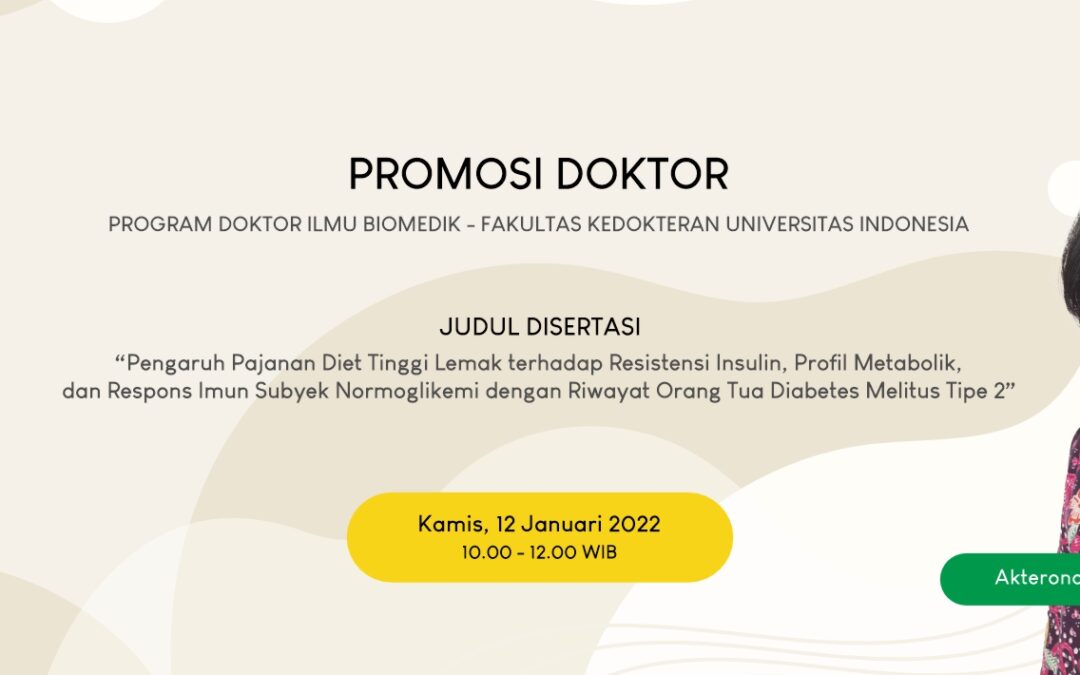Oleh: Dr. Akterono Dwi Budiyati, S.Si., M.Biomed
Lemak tubuh berlebih, terutama lemak perut tak hanya mengganggu penampilan, tapi juga bisa menjadi sumber masalah kesehatan. Orang-orang dengan lemak perut berlebih menandakan kapasitas penyimpanan lemak tubuh sudah mengalami kelebihan muatan. Lemak perut berlebih ditandai oleh membesarnya lingkar pinggang. Makin besar lingkar pinggang maka makin banyak menghasilkan asam lemak dan molekul proinflamasi yang mengganggu kerja insulin pada sel-sel tubuh sehingga tubuh mengalami resistensi insulin.
Resistensi insulin merupakan gerbang masuk penyakit diabetes. Indikasi berupa perlemakan hati, peningkatan kadar kolesterol, dan peningkatan molekul proinflamasi diketahui terasosiasi dengan kondisi resistensi insulin. Data epidemiologi menunjukkan penyimpangan tersebut kerap ditemukan pada individu dengan lingkar pinggang membesar.
Keturunan diabetes melitus (DM) tipe 2 merupakan kelompok yang rawan mengalami pembesaran lingkar pinggang dan resistensi insulin. Beberapa penelitian membuktikan kelompok tersebut memiliki kapasitas penyimpanan lemak yang lebih kecil dibanding individu non-keturunan DM tipe 2. Karakteristik inilah yang membuat keturunan DM tipe 2 rentan mengalami timbunan lemak perut bila terpajan pola makan tinggi lemak. Akan tetapi, kerentanan keturunan DM tipe 2 terhadap pola makan tinggi lemak belum sepenuhnya disadari masyarakat umum.
Penelitian ini dilakukan untuk membuktikan kerentanan keturunan DM tipe 2 terhadap pola makan tinggi lemak. Lima puluh lima pria sehat terdiri dari 27 subyek keturunan DM tipe 2 dan 28 subyek bukan keturunan DM tipe 2 menjalani penambahan konsumsi krim susu berkadar lemak tinggi ke dalam menu harian mereka selama lima hari berturut-turut. Perubahan yang terjadi pada profil resistensi insulin, metabolik, dan inflamasi dalam darah kemudian dibandingkan antara kedua kelompok.
Hasil yang diperoleh pada penelitian ini menunjukkan bahwa pola makan tinggi lemak dalam waktu relatif singkat mengakibatkan peningkatan resistensi insulin dan kadar kolesterol yang relatif sama di kedua kelompok. Akan tetapi, pada kelompok keturunan DM tipe 2 ditemukan peningkatan respons proinflamasi yang lebih besar secara signifikan dibanding kelompok non-keturunan. Data yang diperoleh menunjukkan sebagian besar kelompok keturunan DM tipe 2 mengalami respons proinflamasi berupa peningkatan rasio TNF-α/IL-10 setelah perlakuan. Risiko mengalami respons proinflamasi tersebut 7 kali lebih besar dibanding individu bukan keturunan DM tipe 2. Menariknya, risiko individu keturunan DM tipe 2 tersebut meningkat menjadi 25 kali lipat pada kelompok individu dengan indeks massa tubuh (IMT) gemuk atau ≥25 kg/m2.
Kerentanan kelompok keturunan DM tipe 2, terutama yang memiliki IMT ≥25 kg/m2 tersebut, diduga disebabkan oleh gangguan pada fungsi respons anti inflamasi sel-sel imun. Penelitian ini menemukan adanya hubungan kuat antara gangguan fungsi anti inflamasi sitokin IL-10 dengan peningkatan lingkar pinggang secara bermakna di kelompok tersebut. Berdasarkan hasil yang diperoleh, penelitian ini membuktikan bahwa pola makan tinggi lemak menimbulkan dampak buruk berupa peningkatan respons proinflamasi lebih besar pada kelompok keturunan DM tipe 2 dibanding individu lain. Keturunan DM tipe 2 terutama dengan IMT ≥25 harus menghindari pola makan tinggi lemak dan menjaga ukuran lingkar pinggang mereka melalui olah raga teratur agar proses resistensi insulin tidak berlanjut.

